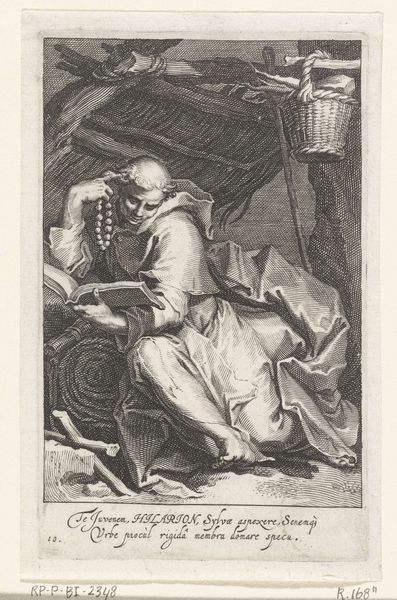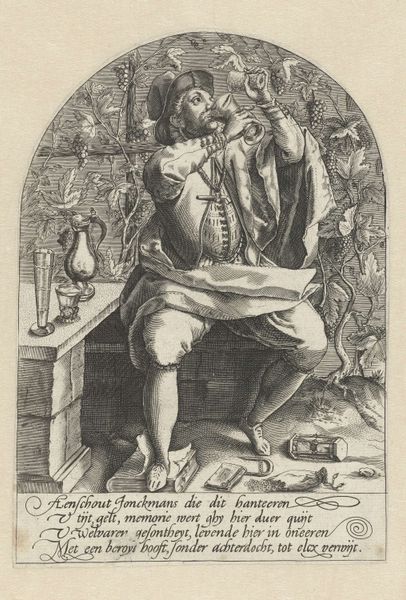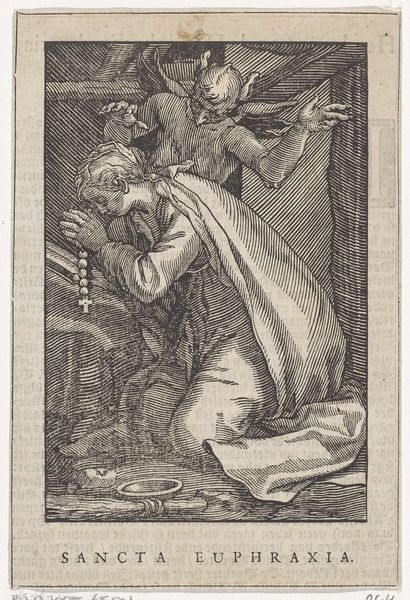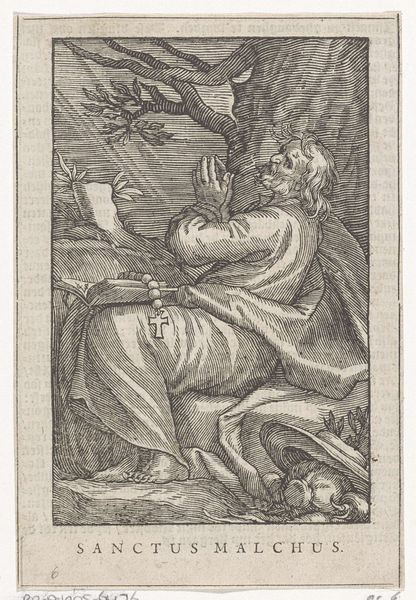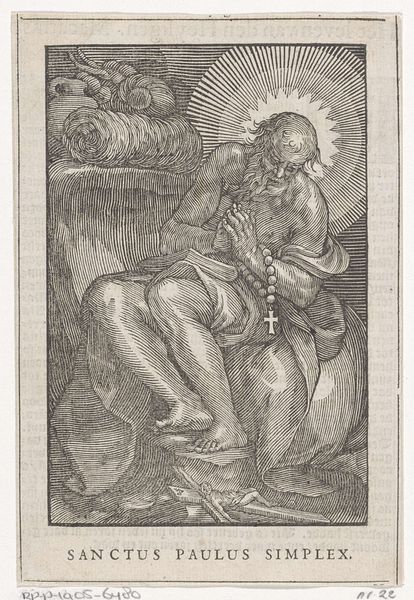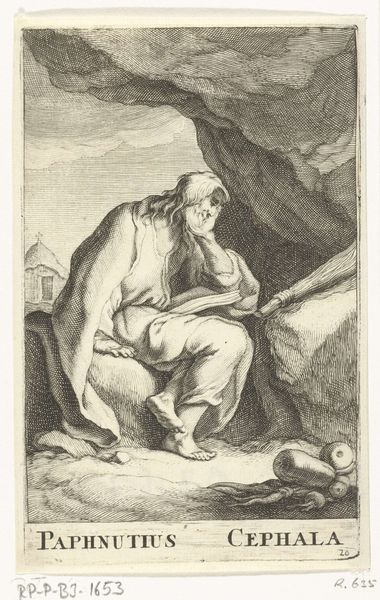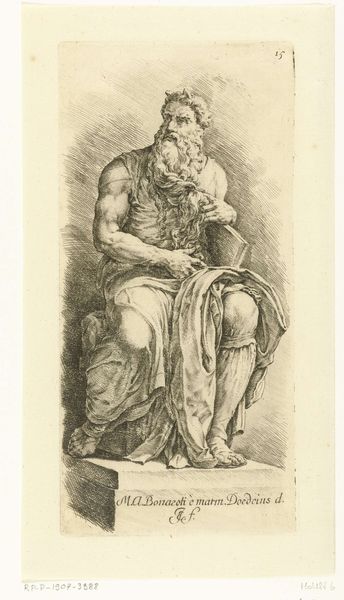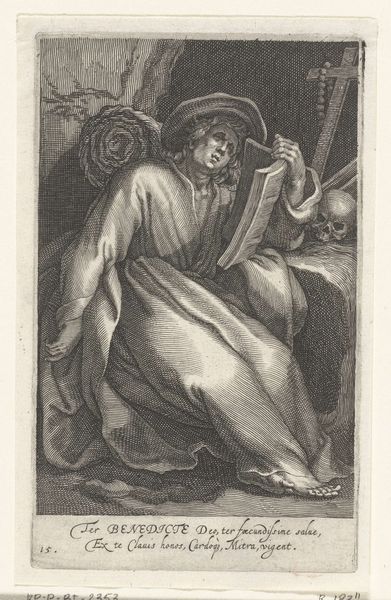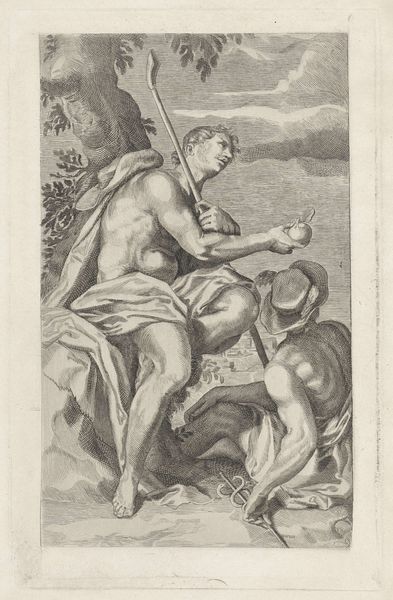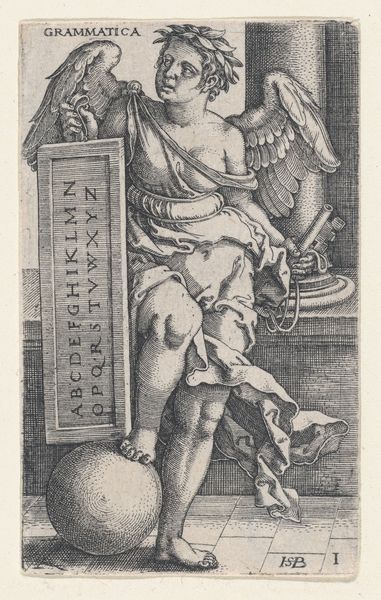
print, engraving
#
portrait
#
baroque
# print
#
old engraving style
#
figuration
#
history-painting
#
engraving
Dimensions: height 146 mm, width 93 mm
Copyright: Rijks Museum: Open Domain
Editor: This is *Saint Paul of Egypt as a Hermit*, an engraving from sometime between 1590 and 1619, by Boëtius Adamsz. Bolswert. I'm struck by how much detail is crammed into such a small print, and the high contrast adds to the drama. What stands out to you? Curator: As a historian, I immediately think of the rise of religious orders during that time, and the complex interplay between institutional power and individual piety. Prints like these were often commissioned by or for those orders, serving as propaganda, illustrating the virtues of their chosen path. Who was the intended audience? Did Bolswert create it to disseminate specific religious or political ideas? Editor: That's interesting! I hadn't thought of it as propaganda, but more as just a devotional image. So the rosary beads, the skull, those aren't just personal symbols of faith? Curator: Exactly! Consider what qualities of the Saint are being emphasized – humility, repentance, devotion – and how those connect to the religious movements of the time. Images like this shaped public perception. What else do you notice that might speak to its social role? Editor: I see. So the relative isolation he depicts reflects how monastic life would provide respite away from social concerns and the ills of society. So everything is purposefully selected to push an agenda? Curator: "Agenda" may be too harsh. But artistic expression doesn't occur in a vacuum. Consider who's paying, who's viewing, and what cultural forces are at play, and it will enrich your reading of this striking piece. Editor: That totally reframes my understanding of the work! I’ll be much more attuned to these underlying factors when viewing religious art from now on. Thanks for pointing that out!
Comments
No comments
Be the first to comment and join the conversation on the ultimate creative platform.
